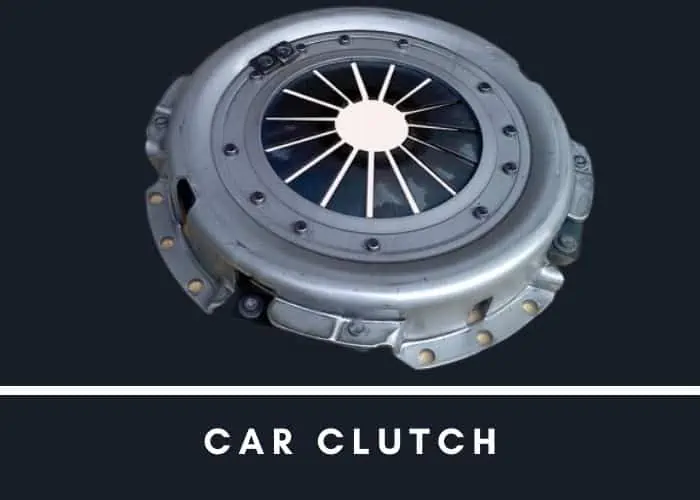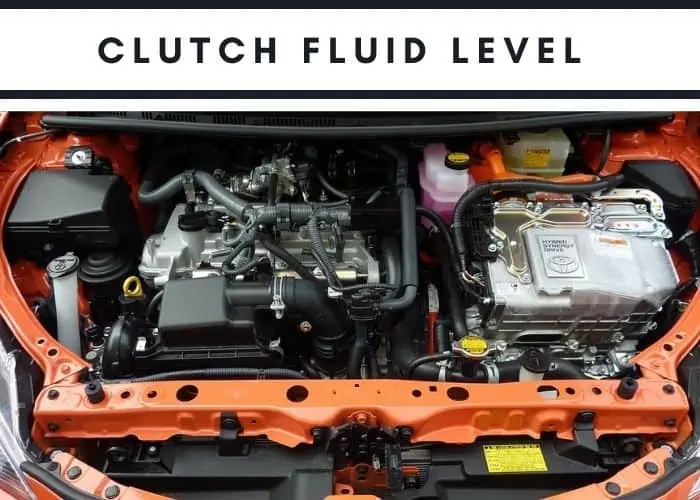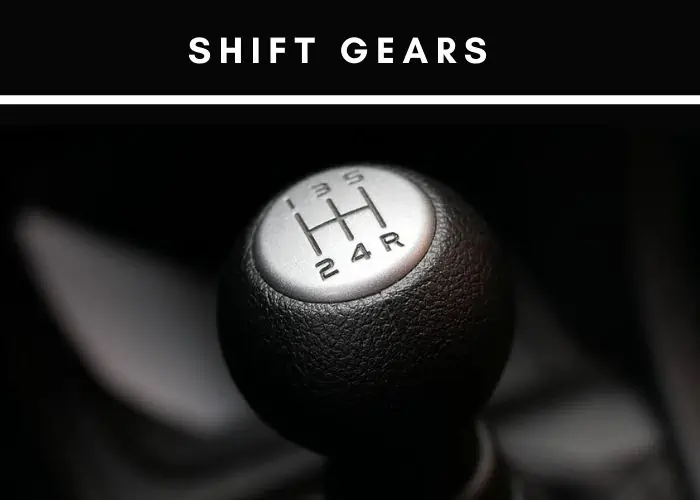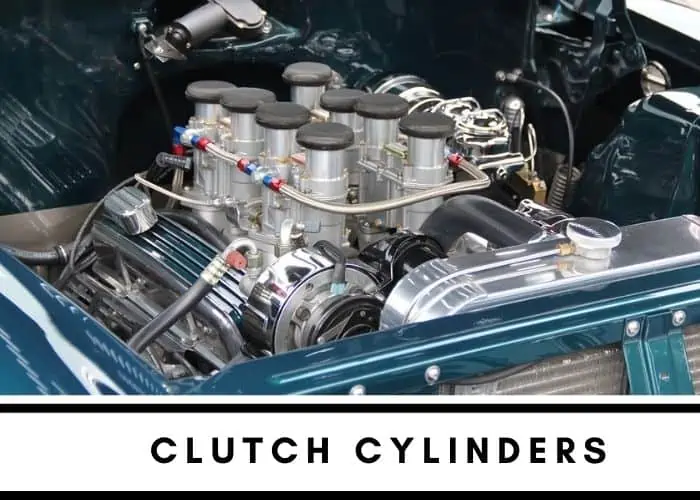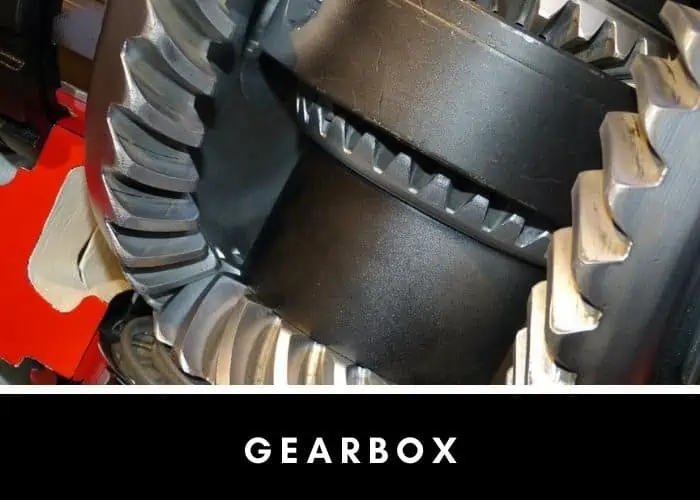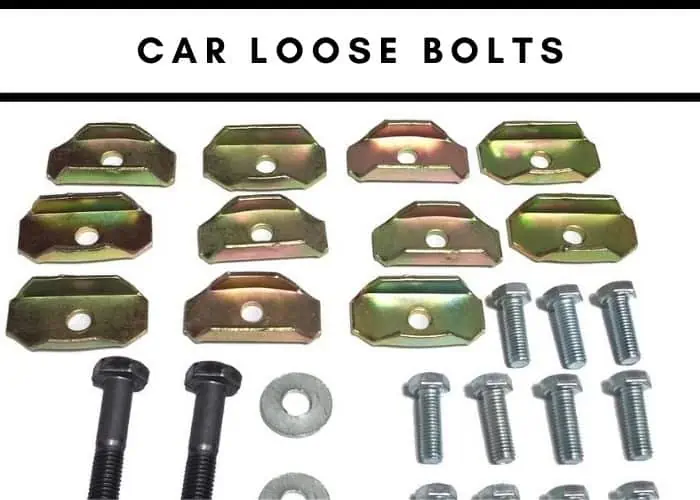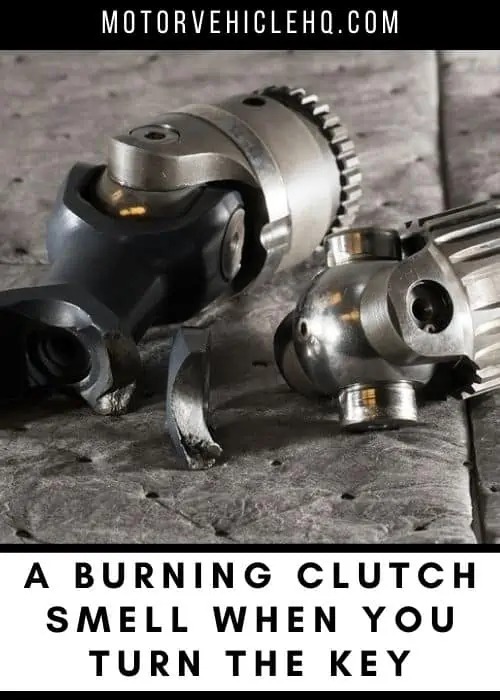If you smell something like burning rubber when you turn the key in your car, it’s time to look at the clutch.
The clutch is essential to the vehicle’s transmission system and ensures power from your engine gets transferred to the wheels.
If you find a problem with the clutch, it will start to burn and emit an odor. It can be dangerous if left untreated because it can lead to costly repairs.
The clutch is typically a disc that is clamped to the flywheel (the rotating shaft on which the engine’s pistons move up and down) by springs. The disc is made of a soft metal, often bronze or brass.
Here are some reasons why this happens and how you can stop it before it gets more serious:
Why Is the Clutch Burning?
When you press down on the clutch pedal, a cable connects the clutch to the engine. When you release the pedal, springs pull it back up.
The friction material inside your transmission wears out as you use your car and get miles on it.
The soft metal in the friction material wears away and leaves behind hard pieces that grind together when they move past one another in your transmission.
This grinding sound is what’s known as a burning clutch smell when it happens under very high temperatures or after driving for long distances at high speeds for many consecutive days or weeks.
As this happens over time, more metal particles are released into your car, causing more friction between parts until they wear away, leaving nothing but dust between gears.
What Will Happen if You Ignore the Smell?
The smell of a burning clutch is a warning sign there’s something wrong with your car, and you need to fix it immediately.
If you ignore this smell, you risk causing damage to your engine that could cost thousands of dollars to repair.
The clutch fluid level keeps the clutch moving smoothly and prevents breakage. If you have a low clutch fluid level, it can cause problems with your transmission and other parts of your car. You should check your clutch fluid level regularly, especially if you drive in a city or where there are many hills.
How To Get Rid of This Smell
If your clutch smells like burning plastic, you’ll want to do the following:
- Check the clutch fluid level. Ensure it hasn’t run dry.
- Check for contaminants, such as metal shavings and debris in the fluid. Clean out any clogged passages with a soft brush or cloth if necessary.
- Check for leaks in hoses and seals around the clutch housing, flywheel, and pressure plate assembly, which could cause oil contamination of your new disc/plate package.
- Inspect all parts closely for signs of wear or damage that would interfere with the proper operation: worn components, faulty pressure plates, leaking discs, or worn flywheels can all cause this burning smell when you turn on your car engine.
Symptoms of a Burning Clutch Smell
Problem With the Clutch System
If you notice a burning clutch smell, it can indicate a problem with your clutch system.
The burning odor comes from the friction material inside the clutch drum and overheated flywheel.
The Clutch Pedal Feels Spongy or Sinks to the Floor of the Vehicle
The clutch pedal may sink to the floor of the vehicle. Or, it may feel like it is not getting any pressure when you press down on it.
It means that your clutch is slipping, and you need to replace it.
If you are experiencing a faulty clutch, this can also cause your car to stall and not start again until you take your foot off the brake pedal and shift into neutral (or drive).
When driving a manual transmission car, you need to make sure that the gear is in the right slot, or else you could cause damage to your car. When driving an automatic transmission car, there are two different styles of shifting: “drive” mode and “park” mode. In drive mode, your car will automatically shift gears as needed depending on how fast or slow you’re going.
It Is Difficult To Shift Gears While Accelerating or Decelerating
If you are experiencing difficulty shifting gears while accelerating or decelerating, a problem with the clutch could cause it.
The clutch is the mechanism that transfers power from your engine to your transmission. It can make driving difficult if it fails.
It’s important to note that problems with other components of your car could cause this symptom, such as your transmission or engine.
So, don’t assume it’s just because of a faulty clutch. Your mechanic may need to perform tests before diagnosing what part of the drivetrain needs replacing.
Grinding or Squealing Noise When Shifting Gears
If there’s a grinding or squealing noise when shifting gears, a worn-out clutch may be the problem. A defective clutch cable or master cylinder can also cause it.
If you have been experiencing any of these symptoms, it is time to schedule an appointment with your mechanic, so to diagnose and repair the problem.
How To Diagnose a Burning Clutch Smell
Here are the steps to diagnose a burning smell from the clutch and help you identify what’s causing the problem.
Step 1: Check the Fluid Level in the Reservoir
If your clutch is making a burning smell, there’s a good chance that it’s because you’re low on brake fluid.
The first thing to check is to have enough brake fluid in your car. To do this:
- Park your car on a flat surface and set it in a parking position.
- Open the hood and look for an oil reservoir or a large plastic bottle with fluid inside it. You will find it near where you park your foot during gear changes, usually towards the driver’s side of your car under some cover or shield (it may have a clutch written somewhere along its sides).
Step 2: Check for Damage to the Clutch
The second step in diagnosing your smelly clutch is to check for damage. A variety of issues can cause a burning smell, including:
- Some burning clutch odors are due to fluid leaks and/or contamination in the system. When you see any signs of oil on the ground under your vehicle, this could point to a leaky seal or gasket.
- If your clutch is dragging or slipping when you press down on it, this may indicate that a part within the system has failed and needs replacement (this will usually require replacing more than one part).
- If an individual piece inside the system breaks away from its place, it can cause some serious issues with performance and even lead to failure at some point.
Step 3: Check for Loose Components
- Check for loose components.
- Check for loose bolts.
- Inspect for loose cables.
- Inspect for loose hoses.
- Check for loose connections.
- Check for loose wires, including fuses and relays, which can be found in your car’s engine compartment or under the hood, depending on your vehicle model and make/model.
Step 4: Look for a Broken Link or Component
If you’re still having trouble diagnosing the source of your smelly clutch, it’s time to look at the connections between your clutch pedal and transmission.
First, check that your clutch line isn’t leaking or broken. It can happen when you have overtightened a fitting causing it to crack and leak fluid into hot engine parts.
Next, check that none of your other components are damaged. Your slave cylinder may be leaking fluid into the master cylinder (or vice versa), which could cause overheating and lead to internal damage in both cylinders.
Clutch cylinders are the part of your car that takes the pressure from the pedal, and distributes it to the clutch plates to engage them.
Step 5: Check the Master Clutch Cylinder and Slave Cylinder
Next, you’ll want to check the master clutch cylinder and slave cylinder. The master and slave cylinders are hydraulic cylinders.
The master cylinder applies pressure to the pedal, and the slave cylinder applies pressure directly to your clutch pedal.
A hydraulic line connects them and provides them with oil from the engine and transmission.
These two systems are also mechanically linked through a gearbox that allows your car’s engine to drive gears inside both cylinders, so they can operate smoothly when needed.
This step will help you determine if it is an issue with one or both components that regulate actuation between your foot and ultimate gear shifting capability.
Steps To Replace a Burning Clutch
A burning clutch can happen in an automatic or manual transmission, and friction material wear usually causes it.
Block the Tire
Block the tire of the car you’re jacking up to prevent it from rolling. You can use wood like a large piece of 2×4 or 4×4 lumber.
Lift the car onto its tires by using a floor jack. Raise the vehicle until it’s high enough to crawl underneath and look for damage to your clutch assembly or surrounding parts.
If you would work under your vehicle for an extended period, invest in protective gear like gloves, goggles, and coveralls (the last two are optional).
Remove the Transmission Oil Line
Remove the transmission oil line from the engine to complete this step. To do so, locate it by looking for a long tube with a wire attached to one end and a metal fitting on the other.
It should be near where your engine meets your transmission. The fitting should connect to a small plastic tube that goes into a hole on your engine block.
Loosen the Bolts Securing the Gearbox to the Engine
To loosen the bolts, you will need a ratchet and socket. Lose the bolts in a star pattern, starting with one in the top-left corner of the engine block, and loosen them simultaneously.
Do not over-loosen these bolts, as they are crucial for keeping your vehicle stable while driving.
If you do not have access to such tools or find them difficult to use, you can use wrenches instead — ensure that they fit snugly around the bolt so that it doesn’t come off unexpectedly.
Loosen the Gearbox Mounting Brackets
The next step is to loosen the gearbox mounting brackets. Use a ratchet wrench to remove the bolts in a star pattern, and do not remove them all the way.
You have loosened them and rotated the gearbox so that it sits at an angle to its mountings.
Pop Off the Ball Joint and Remove It From the Gearbox
Replacing your clutch is a relatively simple repair, but you’ll need to be patient and take your time.
The first step is to remove the ball joint from the gearbox. To do so:
- Remove two bolts that hold the gearbox to the transmission housing (to access these bolts, you may have to pry off a cover that covers them).
- Remove one bolt that holds the gearbox in place (this bolt will also detach from its bracket).
- Pop off the ball joint with a hammer or pry bar and remove it from both places — the transmission housing and gearbox — and set it aside for now (it should come out easily if there’s no dirt or rust on it).
A car gearbox is what allows you to change gears in your car. It’s a mechanical device that sends power from the engine to the wheels, and it consists of an input shaft, a clutch, an output shaft, and gears.
Remove the Gearbox Out of the Vehicle
Remove the bolts securing the gearbox to the engine. Also, remove all other items connected, such as power steering, water, and fuel pumps.
Pop off the ball joint and remove it from the gearbox by removing its bolts. Remove any remaining mounting brackets on your vehicle’s frame or chassis.
Finally, with help from an assistant or friend, lift out your gearbox using a carjacking placed under its front end (near where you removed those first few bolts).
Unbolt Clutch Parts From Flywheel
Unbolt the parts from the flywheel and pressure plate. You don’t want to forget any of these steps:
- Remove the flywheel nut (a large nut that holds everything together).
- Pull off the pressure plate, which holds down your clutch disc and helps transfer power from the engine to your wheels.
- Pry off the clutch disc and remove it with great care; it is thin and will shatter if dropped or handled roughly, so be extra careful when removing this part.
Use Clean Rags To Clean Dust and Dirt off Flywheel Surface
If a clutch is slipping, it may be because of one or more of the following:
- The surface where the flywheel meets the pressure plate is dirty.
- There are too many contaminants between the pressure plate and flywheel.
- You’ll find a build-up of the friction material on either component (the clutch disc or pressure plate).
Install New Clutch Plate and Pressure Plate on Flywheel
If your clutch is worn, you’ll need to replace it. Here’s how:
- Install a new clutch plate and pressure plate on the flywheel.
- Install new bolts in the pressure plate. Tighten bolts to specifications listed in the owner’s manual or with a torque wrench and check the tightness of each bolt by pulling up on one side of the car while pushing down on the other side with an assistant (you will require someone who can lift heavy objects). Repeat the steps above until all bolts are tight if any bolt becomes loose after installation.
- Check that the bolts are not loose again before moving on to the next step in this procedure. Do not continue if any bolt is loose.
Loose bolts are a common problem in cars, and they can cause damage to your vehicle. If you notice that your car is vibrating or shaking more than usual, it’s likely that you have loose bolts.
Line Up the New Clutch
Ensure you line up the new clutch properly and put it in the same position as your old one.
You’ll also want to ensure that you tighten your new clutch properly before testing out your car.
Cost To Replace a Clutch
Clutch replacement is one of the most common repairs for a car or truck but is also expensive.
The average cost to replace a clutch ranges from $950 to $1800, depending on the make and model.
The cost of replacing your clutch kit depends on the parts and labor required to install it.
- Parts: The part numbers you need will vary depending on what is wrong with your car’s clutch, but a typical clutch kit costs around $300-$400. You’ll also likely have to replace some other pieces like a throw-out bearing ($20), pressure plate ($60), flywheel ($150-$200), slave cylinder ($30), and throw-out arm assembly ($90).
- Labor: The amount of time it takes for an experienced mechanic to replace these parts varies greatly depending on the make and model of your car. A shop manual can give you an idea if their rates are reasonable.
Common Questions and Answers
Why does your car smell like burning rubber?
The clutch may be slipping or failing if you have a manual transmission. A slipping clutch will cause the engine to rev higher than normal while driving and make a loud squealing sound when engaging.
A failing clutch means you have lost some friction material between your flywheel and pressure plate.
It causes them to rub against one another and creates friction instead of smooth motion between them.
If none of these scenarios seem likely for your situation, try checking all related components before assuming anything else:
- The mounting bolts for any part that connects directly to another component should be tight enough not to move.
- It should not be so tight as to cause damage via excessive pressure points across surfaces where they meet (these include things like pistons against cylinders!).
- Ensure there aren’t any foreign objects lodged between moving parts, such as pistons/cylinders or flywheels/pressure plates.
What does it feel like when a clutch is going bad?
You may start to notice symptoms of a slipping or burning clutch, such as:
- A burning smell comes from your car, especially after driving it for a while (sometimes the smell will be more noticeable when you turn off the engine).
- Noise from your clutch pedal when you engage it and disengage it, like a grinding sound or squeaking noise.
How do you know if your car has a bad clutch cable?
A faulty clutch cable causes poor or no engagement of the clutch. It can lead to frequent stalling, which can be frustrating when trying to merge into traffic.
How long do clutches last in cars?
Well, it depends. In general, clutches will last for the life of your car.
Your clutch could wear out sooner than you expect if you drive with a heavy foot or in stop-and-go traffic regularly.
Clutches can also wear out if you drive in mountainous terrain.
What are the problems of a failing clutch master cylinder?
If your clutch is slipping, you may notice:
- Your clutch pedal going to the floor.
- Feeling like your clutch is stuck (even though it isn’t). You’ll push the pedal, and there will be no movement. It’s just not working.
The problem might also feel like this:
- The pedal feels stiffer than usual when you push it, but that’s not necessarily a sign of a problem. It may be because you haven’t been driving much lately and have forgotten what it’s like to drive with effort. If this happens only occasionally, it’s probably not an emergency yet — keep an eye out for other signs in case things get worse.
How can you avoid Clutch Replacement Costs?
Regular maintenance of your car is the best way to avoid expensive repairs. You should regularly check your car fluid levels, including oil, coolant, and brake fluid.
You should also regularly check the condition of tires and belts. Finally, make sure that you are getting regular brake inspections.
If you hear any unusual noises when braking or if there’s a persistent shuddering while braking, it might be time to take it to a mechanic for some diagnostics.
If you’re unsure about how often these items need checking out or what they even do, then ask an expert mechanic.
Conclusion
You can replace a burning clutch by yourself if you know how to fix your clutch pedal. Check the clutch, flywheel (where applicable), and the slave cylinder if manual.
If it’s a hydraulic clutch, check the master cylinder too. And finally, consider checking your alternator output, especially on cars with an electric cooling fan.
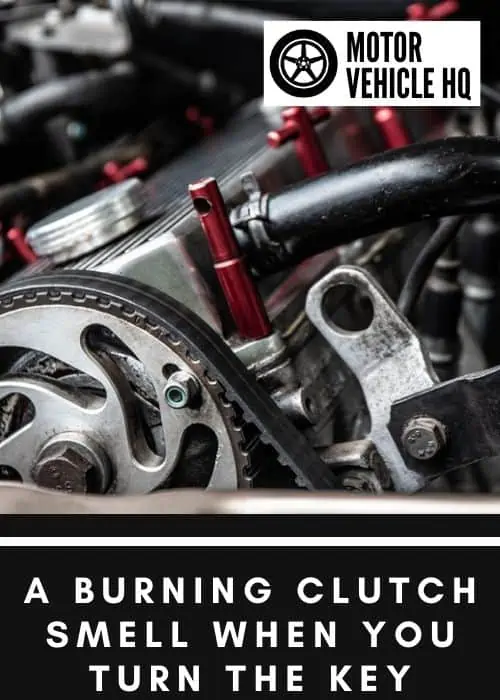

Jim Wicks is the founder of MotorVehicleHQ. With over two decades of experience in the automotive industry and a degree in Automotive Technology, Jim is a certified car expert who has worked in various roles ranging from a mechanic, car dealership manager, to a racing car driver. He has owned more than 20 cars over the past 15 years. Ask him about any vehicle you see on the road and he can tell you the make, model and year. He loves the aesthetics of all things cars, and keeps his vehicles in pristine condition.
In his free time, Jim enjoys getting his hands dirty under the hood of a classic car or taking long drives along the country roads. His favorite car? A 1967 Shelby GT500, a true classic that, according to Jim, “represents the pure essence of American muscle.”
